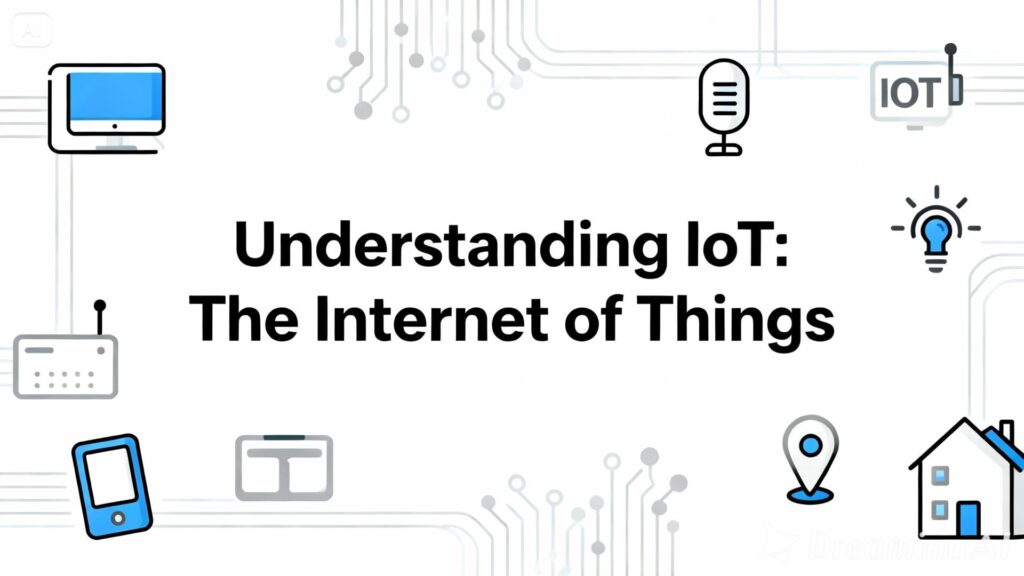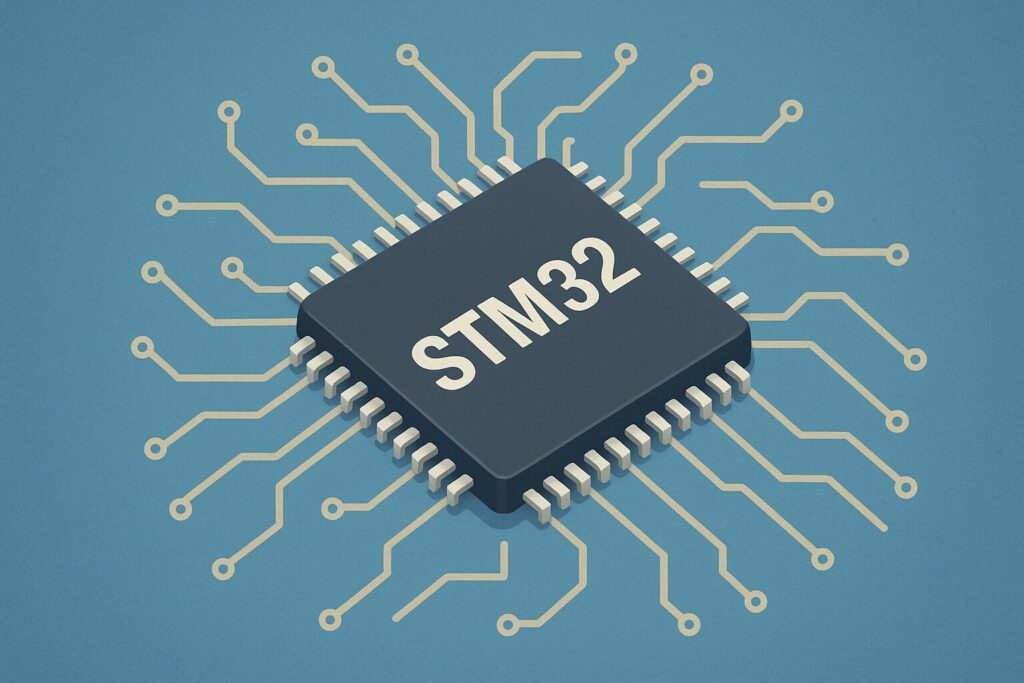Understanding IoT
With technology advancing rapidly, we are entering an era where devices don’t just respond to user commands—they communicate with each other. At the heart of this transformation is IoT, the Internet of Things. But what exactly is IoT, how does it work, and what hardware do you need?
IoT at a Glance
Simply put, IoT enables devices to collect and share data over the internet. For example, a sensor might measure temperature, a microcontroller processes the data, and it’s sent via Ethernet, Wi-Fi, or GSM to the cloud. Users can then access this information on their smartphones.
IoT essentially consists of three main components:
- Hardware: Sensors, actuators, microcontrollers, communication modules
- Software: Source code, operating systems, cloud platforms
- Connectivity: Ethernet, Wi-Fi, GSM/4G, LoRa, Bluetooth
How IoT Works
The flow of an IoT system can be summarized in five steps:
- Sensing (Data Collection): Sensors capture physical data from the environment (e.g., temperature, humidity, motion).
- Processing: Microcontrollers (Arduino, STM32, ESP32) process the data.
- Communication (Data Transmission): Data is sent to the cloud via Wi-Fi, Ethernet (e.g., WIZnet), GSM SIM cards, or LoRa.
- Storage & Analysis: Cloud servers store the data and analyze it using software or AI.
- Control & Action: Users send commands through smartphones or computers, or the system acts automatically.
Example: An intelligent irrigation system measures soil moisture → STM32 processes the data → WIZnet Ethernet module sends it to the cloud → If moisture is low, the pump activates automatically.
IoT Hardware
Microcontrollers & Development Boards
Microcontrollers are the brain of IoT devices. The choice depends on the project:
- Arduino: Ideal for simple, fast prototypes with extensive library support.
- STM32: High performance, suitable for industrial applications.
- ESP32/ESP8266: Integrated Wi-Fi and Bluetooth, very popular for IoT projects.
- Raspberry Pi: Mini computer with an OS, ideal for more complex projects.
Communication Modules
Communication is the core of IoT. Various modules enable data exchange with the cloud:
- Wi-Fi: Built into ESP32/ESP8266 or available as external modules.
- Ethernet: Stable wired connection, e.g., WIZnet W5100/W5500.
- GSM/4G SIM modules: SIM800, SIM900, A7670E for mobile connectivity.
- LoRa: Long-range communication with low power consumption.
- Bluetooth/BLE: For short-range connections.
Sensors & Actuators
- Sensors: Temperature (DHT22), humidity, gas (MQ series), motion (PIR), light (LDR).
- Actuators: Relay boards, motor drivers, LEDs, valve controls.
Applications of IoT
IoT is now part of nearly every aspect of life:
- Smart Home: Intelligent plugs, lighting, security cameras controlled via smartphone. Example: Philips Hue.
- Industrial IoT (IIoT): Machine monitoring, production control, energy management. Example: Siemens MindSphere.
- Healthcare: Wearables to track heart rate and blood pressure; remote patient monitoring. Example: Smartwatches.
- Agriculture: Smart irrigation, soil moisture monitoring, livestock tracking. Example: LoRa-based sensor networks.
- Smart Cities: Traffic light control, parking sensors, air quality monitoring. Example: Intelligent parking systems.
- Energy & Environment: Monitoring solar panels, wind turbines, real-time energy consumption. Example: Smart meters.
Benefits and Challenges of IoT
Benefits:
- Real-time data collection
- Automation and increased efficiency
- Remote monitoring and control
- Energy and cost savings
Challenges:
- Security risks (cyberattacks)
- Hardware costs
- Data management and cloud expenses
Developing an IoT Project
Typical steps for an IoT project:
- Define the Project: What’s the goal? (e.g., smart irrigation system)
- Select Hardware: Arduino, STM32, or ESP32 + WIZnet Ethernet/Wi-Fi module
- Develop Software: Sensor data processing and communication in C/C++
- Data Transmission: Protocols like MQTT, HTTP, WebSocket
- Application Layer: Monitoring and control via web or mobile apps
Conclusion
IoT is no longer a futuristic concept—it’s here. From smart homes to industrial automation, healthcare, and agriculture, IoT provides solutions across countless sectors.
Choosing the right hardware is crucial: Arduino with Wi-Fi is enough for simple projects, while STM32 with Ethernet (e.g., WIZnet) is more reliable for industrial setups. GSM modules are ideal for autonomous field systems.
The basic IoT principle is simple: Sensor → Processing → Communication → Cloud → User. This chain connects devices and makes our lives smarter.
🔗 Get in touch with us :
Phone/WhatsApp: +41 76 212 8248
✉️ E-Mail: info@revantechnology.com
For detailed information about our services in electronics development & PCB design:
Revan Technology – Your partner for professional electronics and PCB development
Discover our recent work:
Revan Technology – Our Projects


